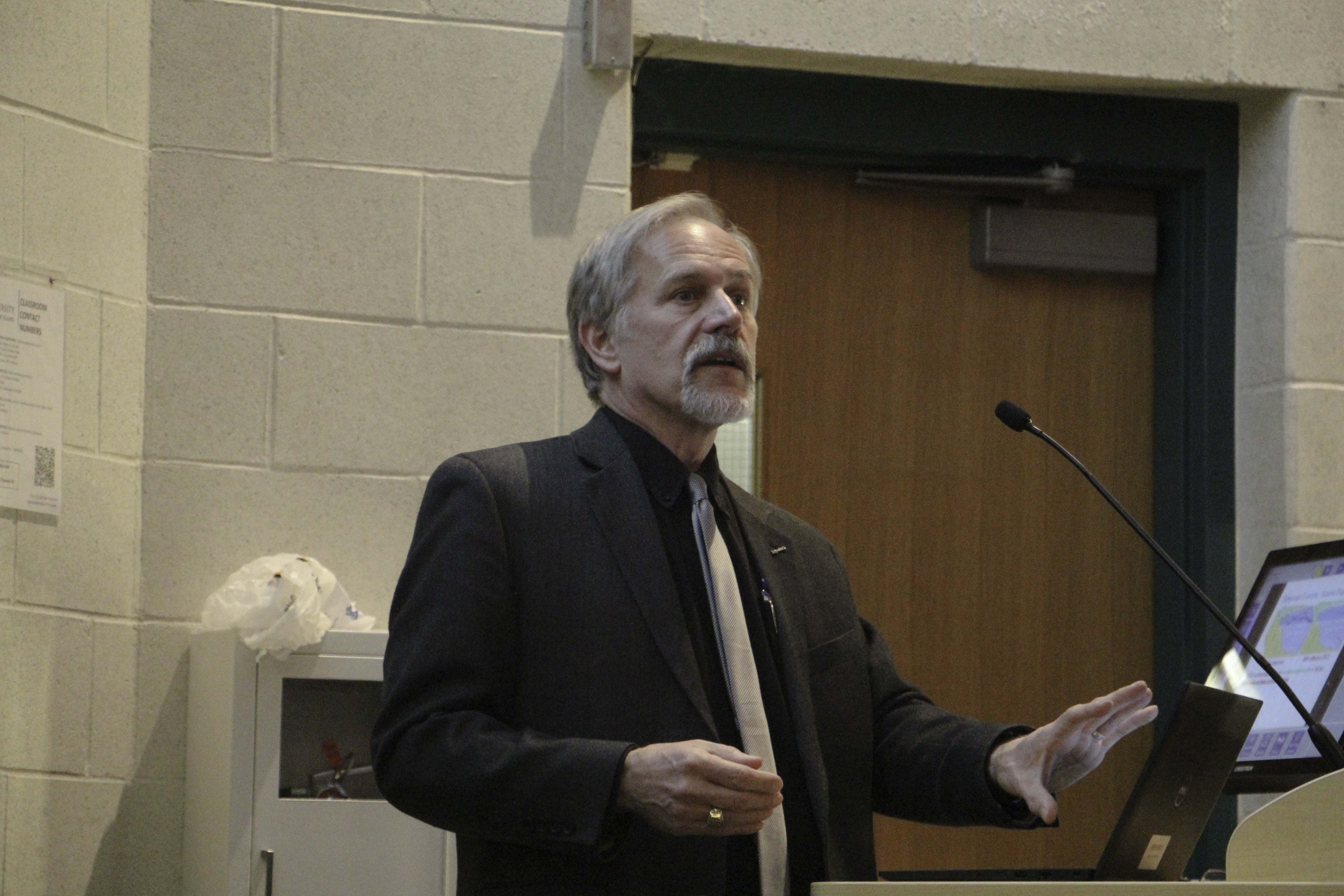Thomas Coolbaugh spoke to students on methods to limit the
Last Thursday, ExxonMobil’s oil spill response advisor, Thomas Coolbaugh, spoke about the use of dispersants in limiting the effects an oil spill has on the environment and surrounding communities.
Dispersants is a new technology that focuses on the break down of oil slicks into smaller particles, making natural absorption into the environment more effective. The field of dispersants in oil spill response grew after the catastrophic Deepwater Horizon oil spill that occurred in April 2010.
Coolbaugh often referred to “oil spill response in a post Macondo world, because a lot of change has occurred since 2010.”
Macondo was the oil deposit connected with the Deepwater rig. Before 2010, it was perceived as near impossible that such a crisis could ever occur, and while there was research being conducted in the unlikely chance it did, not much was known about dispersant mitigation.
Deepwater changed all of that.
“There was 1.8 million gallons of dispersants used to support the Macondo response,” Coolbaugh said.
After this mass use of dispersants, it was determined that they are a viable option in regulating the impacts of oil spills. Dispersants break down the slicks of oil, which may cover thousands of square miles, and cause them to suspend in the water column, before eventually settling.
One of the biggest challenges of cleaning up oil spills is the location and weather conditions. Macondo was three hours offshore and the wind and currents would shift the slick every other day. This meant targeting the area for decontamination was difficult. However, using subsea dispersants, where they are applied directly to the oil streaming out of the well, the spill can be controlled at the source before ever creating a slick.
Coolbaugh also explains the negatives of floating oil slicks, “it can drift on shore, it can affect fisheries, you got marine recreation, and aquatic birds or mammals, drifting oil can be an issue.”
Dispersants are used to limit the range that oil slicks effect. Often times during risk assessment it is seen as a better solution, as dispersants into the ocean instead of letting it drift unpredictably around. Other methods of containment like skimming or burning can be ineffective due to weather or size.
There are environmental implications in the use of the dispersants. In high risk ecosystems like estuaries and salt marshes, where many animals spawn, it is imperative that all data is considered before using dispersants.
According to Coolbaugh, “in some cases it could be safer to naturally let the oil disperse in high risk areas, as the chemicals could harm juvenile fish.” However, there is no correlation between health effects and the dispersants, and seafood is considered safe to eat.
The lecture is part of the Amgen Seminar Series, which is hosted by the chemical engineering department at the University of Rhode Island.

